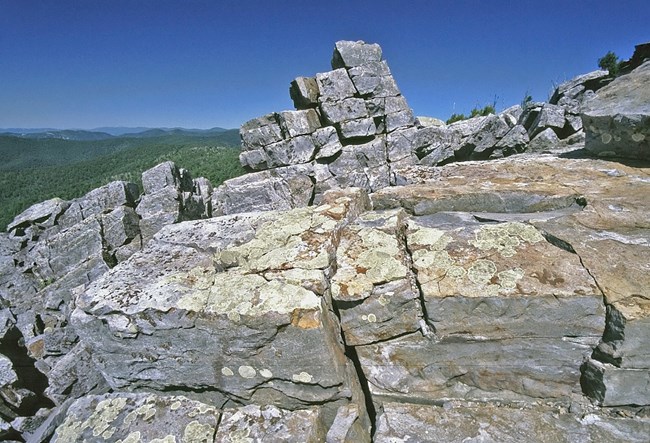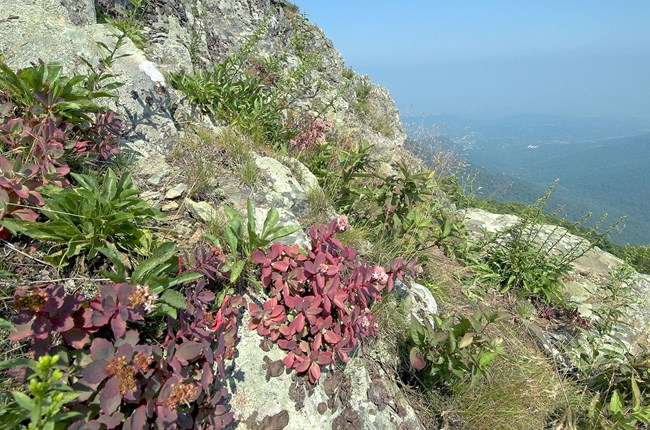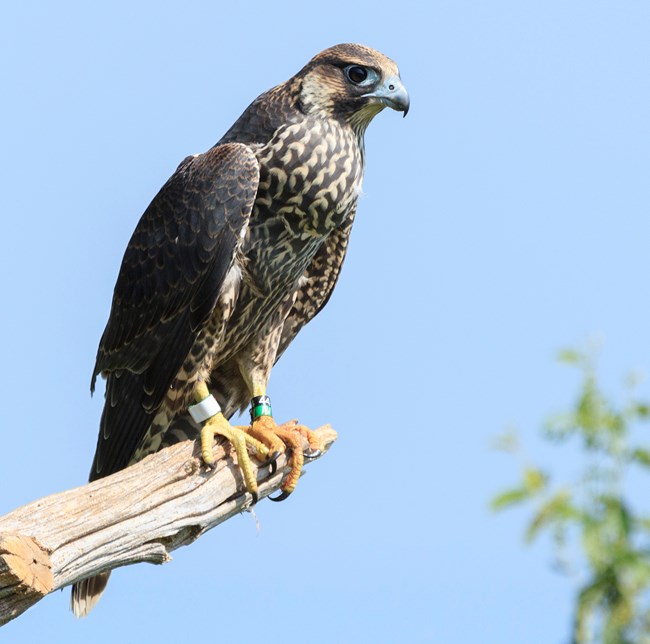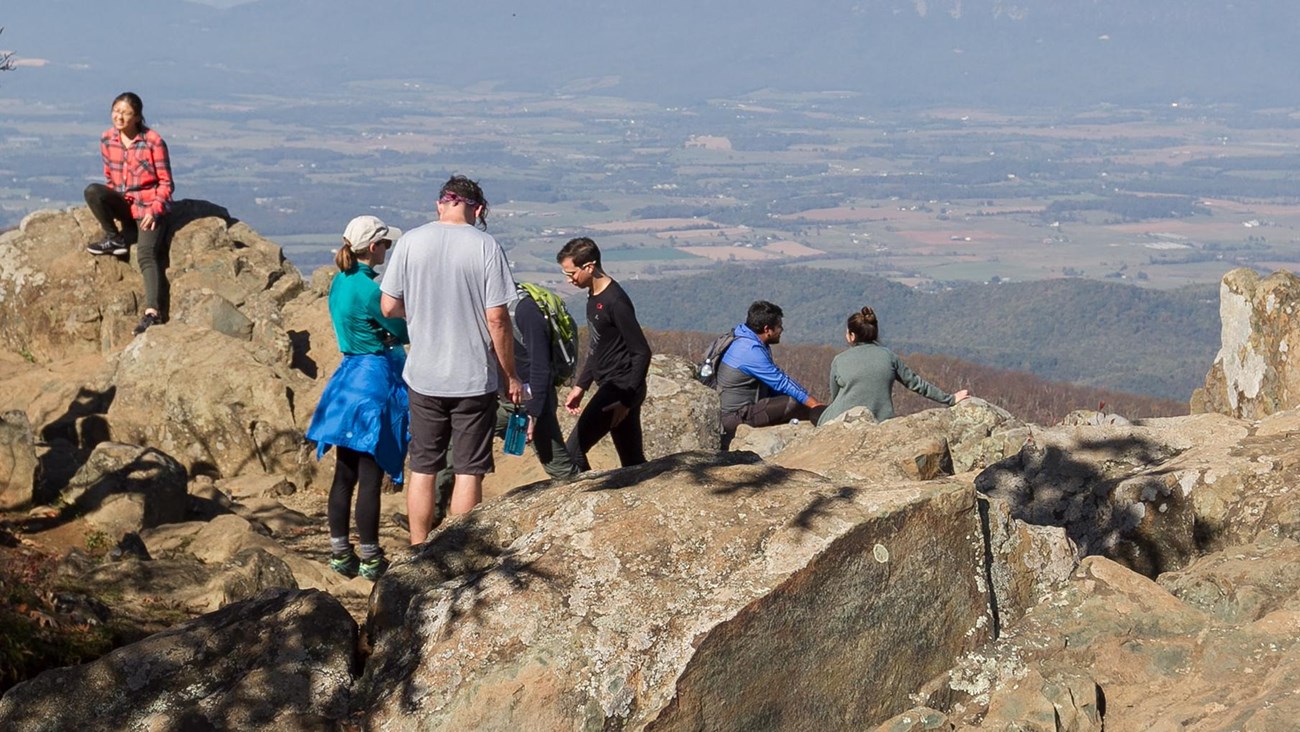
Gary Fleming/ VA DCR DNH 
NPS 
Gary Fleming / VA DCR DNH 
NPS 

Left image
Right image
Rock Outcrop Management PlanIntense human impacts in the form of social trails, campsites, rock graffiti, trash has led to severe degredation of vegetation and soils at some cliff sites as well as impacts to rare plant and animal species and communities. An assessment of human use and impact at fifty of the Park's outcrops found that 40% of sites exhibited moderate to severe human impacts. The majority of impacts to rock outcrop natural resources were from day use activities including hiking and vista viewing. Two sites, Little Stony Man and Old Rag Mountain, have areas of impact caused by rock climbing activities. 
Rock Outcrop Management
Learn how the Park studies and manages rock outcrops and the closures that are in effect to protect these fragile places for the future. |
Last updated: March 4, 2024
